ARABIYAH

|
The
Kingdom of Saudi Arabia comprises the holy places of Mekka and Medina. These
two cities were the first political focus of the Muslim World. The period of the first four caliphs
after the death of Mohammad is known as al-khulafā'
ar-rāshidūn: the Rashidun or “rightly guided” Caliphate. Under
the Rashidun Caliphs, and, from 661, their Umayyad successors, the
Arabs rapidly expanded the territory under Muslim control outside of Arabia.
In a matter of decades Muslim armies decisively defeated the Byzantine army
and destroyed the Persian Empire, conquering huge swathes of territory from
the Iberian peninsula to India. The political focus of the Muslim world then
shifted to the newly conquered territories. From the 10th
century (and, in fact, until the 20th century) the Hashemite Sharifs of Mecca
maintained a state in the most developed part of the region, the Hejaz. Their
domain originally comprised only the holy cities of Mecca and Medina but in
the 13th century it was extended to include the rest of the Hejaz. Although,
the Sharifs exercised at most times independent authority, they were usually
subject to the suzerainty of one of the major Islamic empires of the time. In
the middle ages, these included the Abbasids of Baghdad, and the Fatimids,
Ayyubids and Mamluks of Egypt. Beginning with
Selim I's acquisition of Medina and Mecca in 1517, the Ottomans, in the 16th
century, added to their Empire the Hejaz and Asir regions along the Red Sea
and the Al Hasa region on the Persian Gulf coast. The degree of control over
these lands varied over the next four centuries with the fluctuating strength
or weakness of the Empire's central authority. In the Hejaz, the Sharifs of
Mecca were largely left in control of their territory (although there would
often be an Ottoman governor and garrison in Mecca). For a time the
Hejaz was controlled by the Saudi’s but these were defeated in 1818 by the
Egyptian Viceroy and the Egyptians continued to occupy the area until 1840.
After they left, the Sharifs of Mecca reasserted their authority, albeit with
the presence of an Ottoman governor and garrison By the early 20th century, the
Ottoman Empire continued to control or have suzerainty (albeit nominal) over
most of the peninsula with the Sharif of Mecca ruling the Hejaz. In 1916, with
the encouragement and support of Britain (which was fighting the Ottomans in the
First World War), Hussein bin Ali of the Hejaz led a pan-Arab revolt against
the Ottoman Empire with the aim of securing Arab independence and creating a
single unified Arab state spanning the Arab territories from Aleppo in Syria
to Aden in Yemen. This resulted, after the collapse of Ottoman power, in an
independent Hejaz of which he proclaimed himself king, with the tacit support
of the British Foreign Office. His chief rival in the Arabian peninsula was
Ibn Saud, the king of the highlanders on the highland of Najd, who annexed
the Hejaz in 1925 and set his own son, Faysal bin Abdul-Aziz Al Saud, as
governor. On January 10, 1926 Abdul-Aziz
declared himself King of the Hejaz and, then, on January 27, 1927 he took the
title King of Nejd (his previous title was Sultan). By the Treaty of Jeddah,
signed on May 20, 1927, the United Kingdom recognized the independence of
Abdul-Aziz's realm (then known as the Kingdom of Hejaz and Nejd). In 1932, the
two kingdoms of the Hejaz and Nejd were united as the “Kingdom of Saudi
Arabia” |
|||||||
|
|
|||||||
|
632-660 |
|||||||
|
Each
tribe of pre-Islamic Arabs had its own identifying coloured banner, and
Muhammad himself is reported to have had a flag called ‘uqab,[1] which
according to one account was white, according to another was square, black,
and spotted with divers colours, while a third says he had two, a large black
one and a small white one. [2] Evidently
another emblem of the Arab troops was the open hand which they carried as the
Roman troops had carried their eagle. The open hand talisman already had a
very long history and was destined to have a long future. Such an open hand is on the staff of the socalled sançak sharif said to have been of
Muhammad but maybe considerably younger. Today it is preserved in Istanbul.
The sançak sharif is green with two breadths of golden embroidered
inscriptions. On the staff is an open hand keeping a miniature Quran. In addition to the banners of Muhammad there is
also the sword Dhu'l-Fakar which
he took from a man called al-'Ās
b. Munabbih. Another piece reported to have belonged to
Muahmmad himself is his mantle, Burda, which was bought
by Mu'āwiya and was preserved for a long time in Baghdad. It was burned
by Hülegü in the 13th century but a replica (thought to be the original) is
kept in Istanbul. The colour of the Burda is green and that is the
colour of a Commander in Chief, Commander of the Guard and comes domesticorum or comes excubitores, known from Byzantium and later Roman
Empires. In muslim context it may be considered to be the colour of the
Commander of the Faithful. The development of emblems of the empire, the
state, the ruler and the lower strata of society took place after the
conquest of Baghdad at a time when the focus of Muslim power had shifted from
Mekka to the newly conqered territories and peoples. |
|||||||
|
The
heraldic history of Saudi Arabia is mainly the history of the Sharifs of
Mekka and in particular the Sharifs from the Hashemite Dynasty who ruled the
Hejaz from 1201 until 1924. The title of sharif is the title of the
descendants of Hassan, a son of the daughter of Muhammad, and Ali, the fourth
caliph of Mekka (656-661). In
particular in younger sources this Ali is called “The lion of God, the face
of God, the Conqueror Ali” and this formula is represented by a calligraphy
of a lion. Later, some caliphs were associated with a lion like Aziz-Billah
(975-976) and Al Mustasim
(1242-1258). [3]
Although
in some rare western sources a lion is mentioned which may refer to the Hashemite
Sharifs, we can not say that a lion was the emblem of the Hashemite Dynasty.
A lion was the emblem of rank of the governors of the provinces of the
Ancient Empires which have existed in the Near East. In that sense the “Lion
of Juda” which is mentioned in several places in the the Holy Bible has to be
interpreted. In that respect the “Lion of Juda” and the “Lion of God” are on
the same military and administrative level, be it that Ali, contrary to
Jesus, in fact held such a high
position. In the Middleages
the lion was quite common as a symbol of military rank. He was used by emirs
in the East and by dukes and counts in the West, military governors of the
third and fourth rank. In its use a Roman and Byzantine tradition was
continued. |
|||||||
|
Of this
kind of lion a great number are known from the Holy Roman Empire (after 1157)
but it is for sure that in that time the lion was a common symbol of military
rank in the Arab world also. Many examples testify that, be it that these
lion were not depicted on shields but were embroidered on official dress or
depicted on belongings of the ruler. An example of such a lion is on this piece of silk cloth
Lion. Purple
silk serge. From the tomb of St. Julian in Rimini. Byzantine, 9th
-10th century, based on a Sassanian original. (Museo
Nazionale, Ravenna.) Contrary
to Western custom, the lion in the Arab world was, following Byzantine and
Sassanian examples, very often depicted on a medallion and sometimes also on
its own. The arms of Sharif Muhammad Abu Normay (1254-1301) as depicted in the Wijnbergen Roll of Arms, may have been
based on such a medallion depicting a golden lion on a red field enclosed by
a golden ring. [4] |
|||||||
|
Arms of “le. Roi darrabe” A.:
De gueules au lion d’or armé d’azur, à la bordure d’or. Wijnbergen
Roll n° 1299. The other arms ascribed by the Wijnbergen Roll to
muslim rulers may have had the same form. A most striking example is the coat
of arms of Alexandria: Or, a disc Sable charged with a lion Argent. The arms of Arabia with a lion and a bordure were
also documented in the report of the Konstanz Council (1417) of Ulrich
Richental. He writes: „Der hochwürdig fürst der
küng von Arabia, da dannan das gut gold kommet, das gold die von Engelland
händ, dar uß gemüntzet wirt die guldin, die man nempt nobell. Des bottschaft
kam mit den byschoffen und botten von Engelland und von im ain landtfahrer.
Und ist under im küng von Hyspie und ist für sich selb, das er nitt bedarff
der herren von Ordo.” [5] |
|||||||
|
Arms of Arabia in the Richental Chronicle, fol 131 v |
|||||||
|
This
rather puzzling legend poses many questions and we wonder for example what an
envoy of the sharif of Mekka had to do in an English delegation? Nevertheless
we may be sure that with this “Arabia” the Empire of the Sharif of Mekka is
meant. A last
documentation of a coat of arms of the King of Arabia has Ducange in 1680 who
writes: Le Roy d’Arabe, d’or au lyon de gueules bordé de mesme & besanté d’argent.
(i.e. Or, a lion Gules within a bordure of the last and strewn with plates) [6] Unfortunately
Ducange gives no references and consequently the arms may have been of any
period before 1680. The lion strewn with plates may be a leopard or panther,
a heraldic beast known from Ilkhanid Persia and China, which makes the enigma
only the greater. It must
be admitted that all European sources giving information about the arms of
Muslim rulers are very puzzling and extremely unreliable. Also, no data about
the emblems of the sharifs of Mekka have come to us from Arabian sources We may
conclude that it is not unlikely that the emblem of the Sharifs of Mekka was
a lion indeed. Data supporting this thesis however are quite scarce and unreliable. |
|||||||
|
The Flag |
|||||||
|
About the
flag of the Sharif of Mekka it is the same story as about the emblem.
Nevertheless there is a passage in the 14th century Book of Knowledge: ”I departed from the island of Ansera, crossed the river Cur, and made a
very long journey until I came to Arabia, traversing a great extent of land,
and arriving at the city of Al Medina where Mahomat was born. Thence I went
to Mechen where is the law and testament of Mahomat in an iron chest and in a
house of calamita stone. For this reason it is in the air, neither ascending
nor descending. Know that this Mechan is the head of the empire of the Arabs.
Its device is a red flag and on it in Arabic letters in gold. [7] |
|||||||
|
|
|
||||||
|
On the
illustration we recognize the corrupted form of the arabian La illaha
illah Allah (There is no God but Allah). Its colours correspond with the
arms of the sharif. |
|||||||
|
Mekka on the portulan of Gabriel de Vallseca. The flag painted black. |
Another,
younger flag may have been yellow with a white crescent. Such a flag is
documented by Gabriel Vallseca on his portulan of 1439. It was the emblem
of a Mameluk vassal or governor.
Later, this flag was overpainted black, probably by a later owner of the map
or when Mekka was conquered by Selim the Cruel.
In the time of the Ottoman protectorate a flag was flown in the Hejaz consisting of a white crescent at the mast end and five-pointed star in te right upper corner on a red field. [8] This was the flag flown by rear-admirals and was also the flag of the Government of the Porte. Today it is the flag of the Turkish Republic. |
||||||
|
|
|||||||
|
1916-1926 |
|||||||
|
|
|||||||
|
Husayn ibn Ali |
1916-1924 |
||||||
|
Sharif Hussein
bin Ali rebelled against the rule of the Ottomans during the Arab Revolt of
1916. On 30 May 1916 he proclaimed the Hejaz independent of the Ottoman
Empire. Between 1917 and 1924, after the collapse of Ottoman power, Hussein
bin Ali ruled an independent Hejaz, of which he proclaimed himself king, with
the tacit support of the British Foreign Office. His supporters are sometimes
referred to as “Sharifians” or the “Sharifian party”. His chief rival in the
Arabian peninsula was the king of the highlanders on the highland of Najd
named Ibn Saud, who annexed the Hejaz in 1925 and set his own son, Faysal bin
Abdelaziz Al Saud, as governor. The region was later incorporated into Saudi
Arabia. The achievement of Hussein ibn Ali is known from stamps and paper money issued during his reign. Also there is a sculptured version above the entrance of Aqaba Castle which served for some time as his residence. The achievement is as follows: |
|||||||
|
Achievement
of the Kingdom of Hejaz as on pound notes, 1924 Arms: Vert, two spears in saltire, their
staffs Or, their points argent, their tassels Gules, charged with a
commanders’ baton per pale Or and Sable between two swords per pale, Argent,
hilts in chief Or. Crown: The sharifs’ headdress and his belt
proper. Supporters: Two palm-trees standing on a white
ribbon proper. Mantle: Gules, fringes and tasseled Or, lined
ermine, on its cupola Aqaba Castle proper, and place on two national flags in
saltire being black, white and green with a red triangle at the mast end. . Photo Phungster The
Hashemite achievement above the entrance of Aqaba Castle. |
|||||||
|
The first flag, adopted 1917
was of three stripes black, green and white with a red triangle at the mast
end. In 1920 the stripes were rearranged into black, white and green. |
|||||||
|
1917-1920 |
1920-1926 |
||||||
|
|
|||||||
|
1932-present |
|||||||
|
Between
1924 and 1925 the Hejaz was captured by Abd al Aziz, the Wahhabite sultan
of Nejd, independent since 1921 In
1927 he let himself be proclaimed King of Hejaz, Nejd and dependencies.
His seal
of 1929 shows a palmtree between two swords and a tughra of the motto
“La ilaha ila Allah, Mohamed Rasul
Allah” in chief. On coins an achievement appeared consisting of a
shield charged with two swords in saltire and supported by two palm-trees.
Silver riyal, 1928-’40 showing the achievement of the United
Kingdom of Hejaz and Nejd |
|||||||
|
King ‘Abd al-‘Aziz Al Sa’ud, during his visit to the Aramco camps in
January 1947. Life photo by David Douglas
Duncan – courtesy Judy Webster Bauer. The picture shows an early version of the royal emblem |
After the
unification of Hejaz and Nejd in 1932
into the Saudi Arabian Kingdom a new emblem was introduced at an uncertain
date but probably just after WWII. This consists of a single palmtree
standing on two swords in saltire. The emblem is gold for royal use and is
placed on a green shield. For other purposes the figure is white or green. Nowadays
the emblem is often depicted full-colour.
ð See ilustration in the head of this essay |
||||||
|
In 1946
the traditional Wahhabite flag was made the national flag of the kingdom. It is green with the motto “La ilaha ila Allah, Mohamed Rasul Allah” in white lettering and a sword per fess
in base |
|||||||
|
The royal standard at first showed the
royal emblem but later the standard was changed into a green square cloth with
two swords in saltire and the motto in chief. Stll later the royal standard
became identical with the national flag, the royal emblem in gold added in
the left upper or lower corner.
Royal Standard of King Saud (1953-1964) |
|||||||
|
Plaque from Luristan (W. Iran): Palmtree
between two griffins. 2nd half of the 2nd millennium B.C. . |
The
Swords in saltire The
emblem was introduced in a time when, continuing a longer muslim tradition, many
nations adopted two swords in saltire below a national badge for emblem of
the army, in particular the armies of the former British colonies.[9] The
Palmtree A date
palm was a symbol of the territory of several empires in antiquity. Examples
are from Akkad, Susa, Sumeria, Assyria and from Mesopotamia in general.
Another example is from the kingdom of Sicilia. The palmtrees of Saudi Arabia
are clearly borrowed from the achievement of the Hejaz. as said
before, was the colour of the mantle of Muhammad. It was chosen by the
Wahhabites because they consider themselves to be the special guards of the
holy places of Mekka and Medina. The Wahhabites, contrary to the Hashemites,
are no descendants of the Prophet and for that reason do not have the right
to bear green. Neither can they consider themselves to be allies of Ali as
they are Sunnites and not Shiites. So, the use of green for the flag is only justified by a new interpretation
of the symbolism of the colour. |
||||||
|
The General
Intelligence Presidency (GIP); (Arabic: رئاسة
الاستخبارات
العامة Ri'āsat
Al-Istikhbārāt Al-'Āmah), also known as the General
Intelligence Directorate (GID) is the primary intelligence
agency of
the Kingdom of Saudi Arabia
|
|||||||
|
Mabahit / المباحث
العامة |
|||||||
|
The al-Mabāḥiṯ al-ʿĀmmah, (General
Investigation Directorate), is the “secret police” agency
of the Presidency of State Security in Saudi
Arabia, and deals with domestic security and
counter-intelligence.
|
|||||||
|
|
|||||||
|
Mutaween (مطوعين) |
|||||||
|
The Committee
for the Promotion of Virtue and the Prevention of Vice (abbreviated CPVPV;هيئة
الأمر
بالمعروف
والنهي عن
المنكر),
also informally referred to as Hai’a, is the Saudi Arabian government agency
employing “religious police” or Mutaween (مطوعين), to enforce Sharia Law within that Islamic nation.
|
|||||||
|
Saudi Armed Forces Organization
Emblem of the Ministry of the
Interior |
|||||||
|
Ministry of Defense and Aviation |
|||||||
|
|
|||||||
|
Saudi Arabian National Guard |
|||||||
|
|
|||||||
|
Joint Chief of Staff |
|
|
|
||||
|
|
|||||||
|
Royal Saudi Land Force |
|||||||
|
|
|||||||
|
Royal Saudi Naval Force |
|||||||
|
|
|||||||
|
Royal Saudi Air Force |
|||||||
|
Roundel |
|||||||
|
Royal Saudi Air Defense Force |
|||||||
|
|
|||||||

© Hubert de Vries 2006-07-06; Updated 2011-05-27; 2018-06-26



















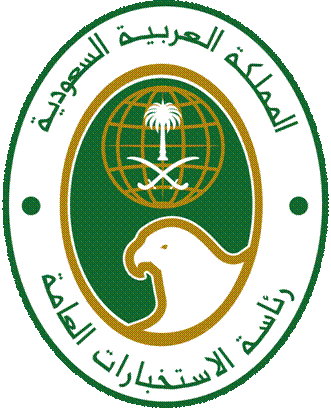
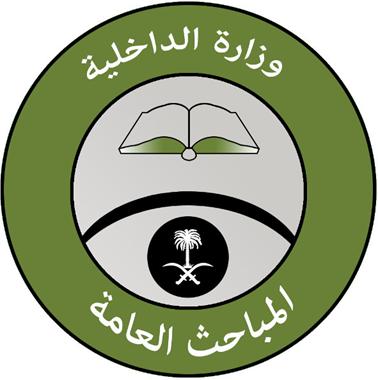
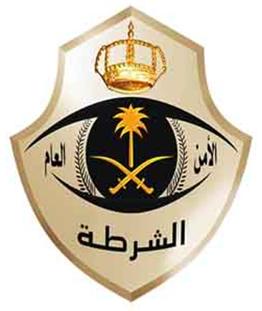
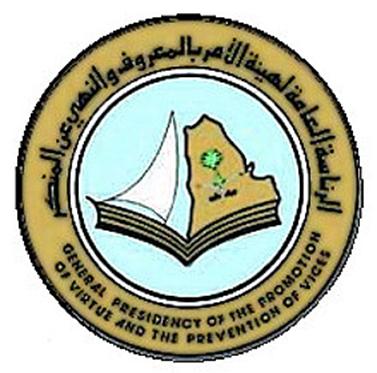
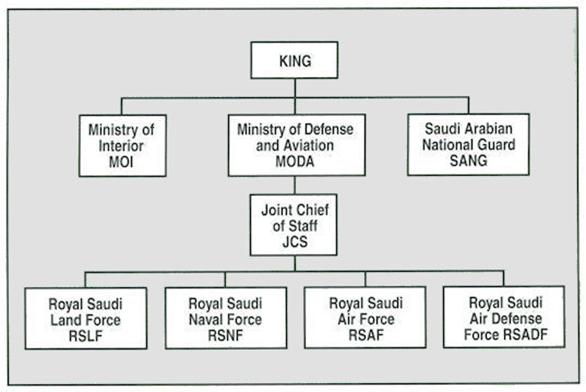
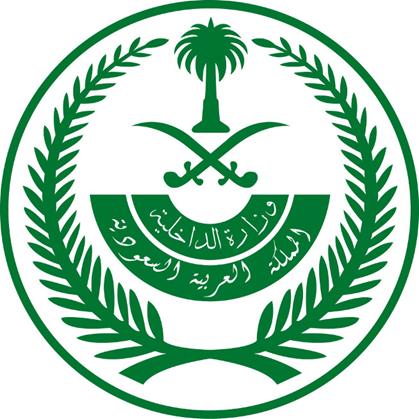
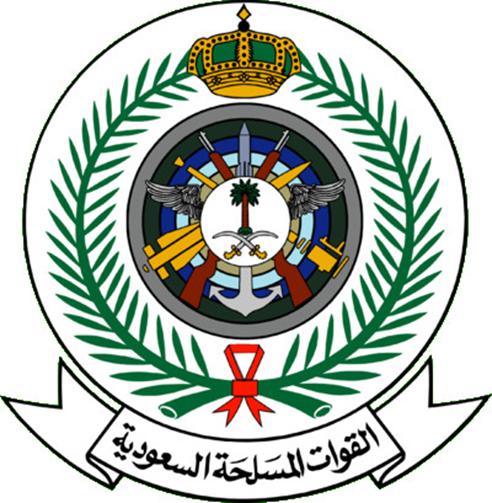
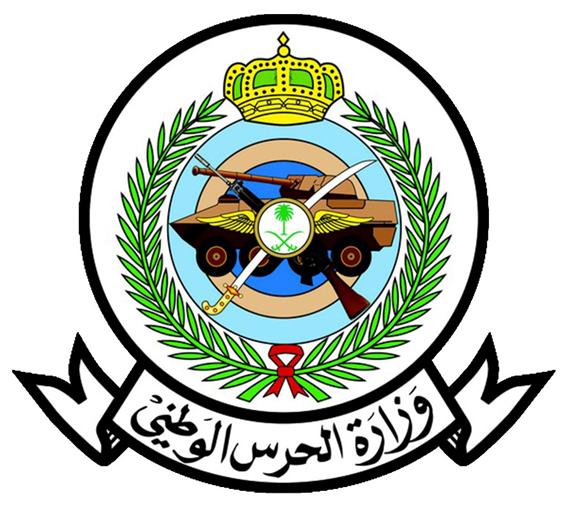
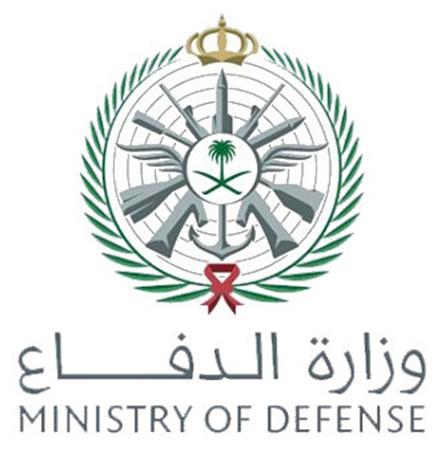
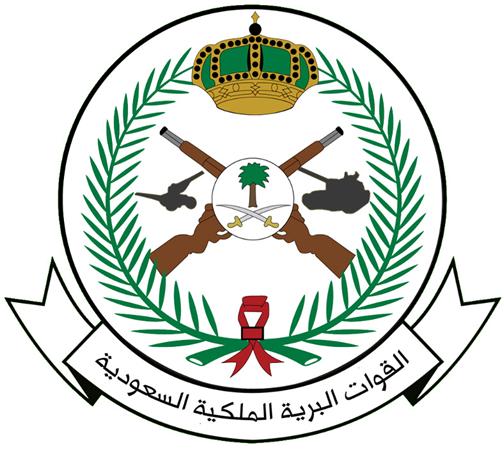
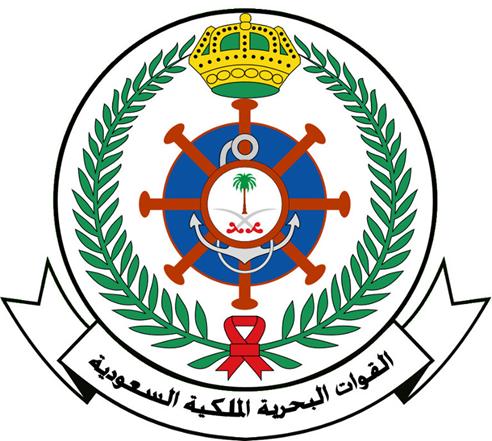
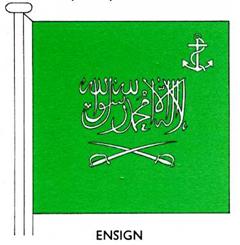
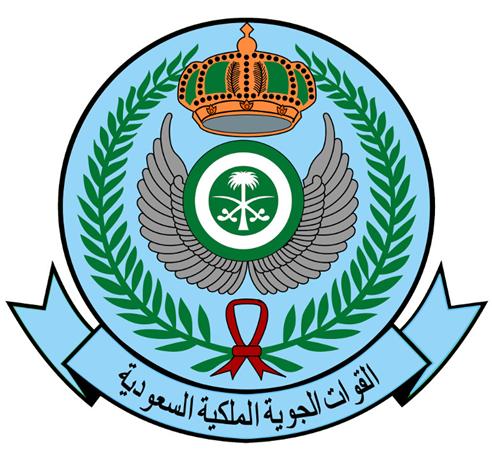
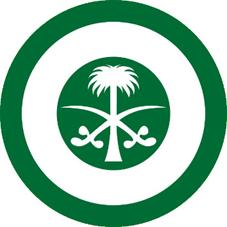
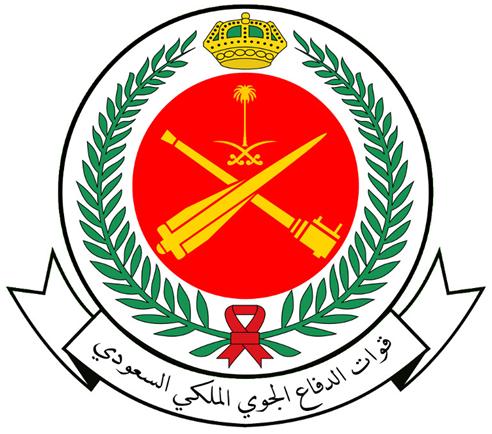
 Heraldry of the World
Heraldry of the World